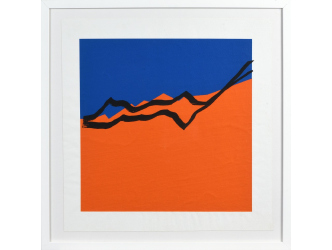Neologism
Messenger RNA, mutated virus, comorbidity, NFTs, blockchain, quantum theory, big data… The world in 2021 is filled – along with our heads – with an assortment of new words which, prior to the public health crisis, sounded like highly technical terms belonging to a specialist vocabulary.
Virtual You
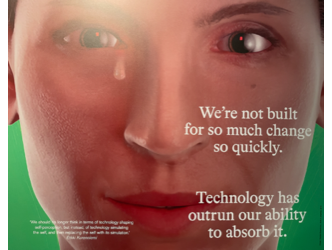
The virtual world has made its grand entrance into our lives, and with it came tonnes of data recording our behaviour, our background, our health status, our finances, and our private lives.
Futuristic Dubai
In the futuristic city of Dubai, at the Jameel Arts Centre, an art space founded in November 2018 by a Saudi collector, an exhibition is taking place that offers the best encapsulation of the current state of affairs.
Age of You
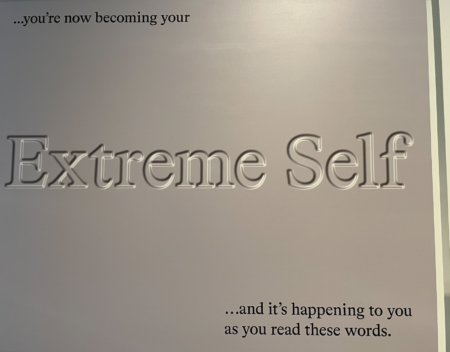
“Age of You” was conceived as an event to accompany a book, created by three avid observers of the transformations of our times, a trio of multifaceted intellectuals who all publish books and curate exhibitions: the Canadian who lives in Vancouver, Douglas Coupland, the Swiss director of the Serpentine Gallery in London with the ability to be everywhere at once, Hans Ulrich Obrist, and the technology enthusiast who was born in Bangladesh, grew up in the UK, and now lives in Dubai, Shumon Basar.
The extreme self
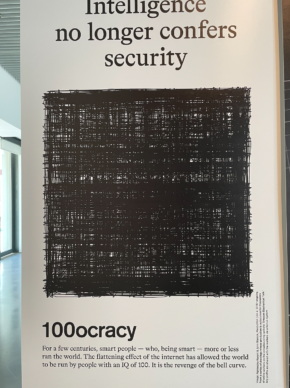
Due to a series of coincidences the exhibition has appeared before the book, which is due to be published this summer under the title “The Extreme Self” by Walter Konig.
Blown away

As for the exhibition, which is absolutely extraordinary, I was blown away by it. It is primarily made up of a multitude of large signs featuring images and more significantly shock phrases about this new reality we are contending with.
Novelty against security
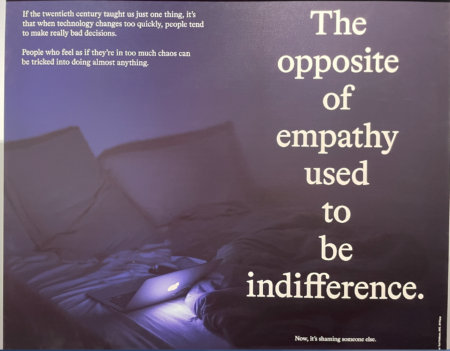
Each of us carries inside ourselves a kind of yin and yang, complementary yet opposing, composed of a desire for novelty set against a desire for security. “Age of You” confronts these two tendencies. We do not leave this exhibition feeling secure.
It’s happening today
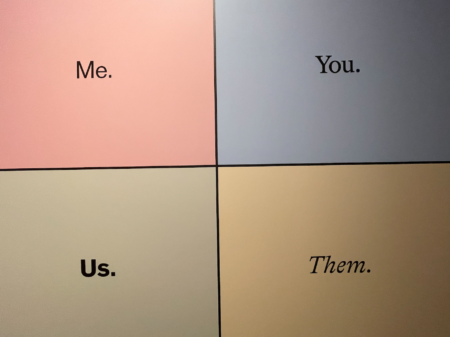
Firstly because, contrary to what you might expect to see in an art space, it displays nothing or next to nothing that is precious. At the same time it raises fundamental issues that get our brains working and encourage us to have a better grasp of what is happening today. The posters could have been exhibited in a public space, a station or a covered market.
Showcase of intellectual theories

This showcase of intellectual theories on large signs is reminiscent of the exhibition by the architect Rem Koolhaas at the Guggenheim in New York, “Countryside: The Future”, just before the onset of the global health crisis (See here the report about it).
Hans Ulrich Obrist
Hans Ulrich Obrist replies that this exhibition could take place anywhere, but that there is a greater quality of focus in a museum. In his view, it resembles “a walk with stops every 2.5 seconds. It’s a bit like a long graphic novel where you can flick through the pages while walking.” (See here an other interview of Hans Ulrich Obrist).
Shumon Basar
This exhibition could just as well also be a television broadcast. This is a remark that delights Shumon Basar, who sums up the idea behind the exhibition: “There is no day when I don’t wake up and notice major changes in the world. We are enmeshed with technology, the influx of information, mass diffusion of data. Our brains have become a battlefield. We are in a historic period.
Douglas Coupland
That’s what the exhibition talks about.” Douglas Coupland, who agreed to be interviewed but not filmed except for a few seconds, associates his need for words to feature in an exhibition to the work of Jenny Holzer and her Truisms series in the 1980s. “I’m standing on the shoulders of giants.” With regards to the exhibition’s elevator pitch, he observes: “Chaos is the mirror of the age. The homogenization of thought has been accelerated by Covid. It’s worth reflecting on the subject of individual and collective identities. Those who visit the exhibition can say: ‘finally, an explanation for everything that’s going on.’ It’s better to have the prognosis than no prognosis.”
Feelings are tradable

Shumon Basar concludes: “The most valuable resource in the world today is not oil or gas, it’s how you feel and how those feelings are turned into data and information. Feelings are tradable.”
Enjoy your visit to the world of tomorrow.
Support independent news on art.
Your contribution : Make a monthly commitment to support JB Reports or a one off contribution as and when you feel like it. Choose the option that suits you best.
Need to cancel a recurring donation? Please go here.
The donation is considered to be a subscription for a fee set by the donor and for a duration also set by the donor.



